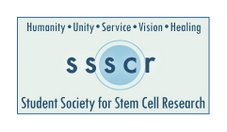Interactive Library Offers a Look at Cancer, Neurons, Stem Cells
Web-based Flash interactives, developed by the Research department at
Children's Hospital Boston, present complex ideas in a user-friendly
format.
Boston, MA (PRWEB) November 15, 2007 -- Express your inner scientist,
explore the interactive library at the Children's Hospital Boston
Research Web site. Recently launched on the site: How Cancer Grows
and Spreads and The Neuron. Also available are features that let
users manipulate stem cells and control cell structure.
How Cancer Grows and Spreads
This animated Flash feature illustrates the growth, progression and
metastasis of carcinomas. In this presentation, cancer researchers
Bruce Zetter, PhD, and Marsha Moses, PhD, identify fourteen possible
stages of a carcinoma and show the possible paths the disease can
take as it moves from one stage to another. Using the
presentation'
as they travel from one possible cancer stage to the next. At each
stop along the way, they learn details about that stage through
descriptions and animated illustrations, and they can learn about
current treatments and the latest research advances.
The Neuron
The Neuron gives users the opportunity to experiment with a virtual
neuron to see what conditions are needed to make it fire and also
with a circuit of interconnected neurons to see how neurons work
together to process information. In addition, the feature provides
step-through animations that illustrate how electrical currents move
down the neuron along the axon (action potential) and how neurons
pass their signals along (synaptic transmission)
Additional Interactive Features
Virtual Stem Cell Laboratory
The Virtual Stem Cell Laboratory is home to a computer-
generated "living" culture of embryonic stem cells. When the Flash-
based feature is launched, the cells quickly begin to reproduce
through the process of mitosis (cell division). Users can then add
different "coaxing" factors -- proteins, for example -- to
differentiate the cells into increasingly specialized cell types.
From the initial colony of embryonic stem cells, virtual scientists
can create 16 cell types ranging from red blood cells to motor
neurons. The cells are even programmed to behave like their real
counterparts. As the lab produces new cell types, the user learns
what scientists know about the cells, including any known or
potential therapeutic applications.
Make a Micrograph
Creating a micrograph -- a photo taken through a microscope -- is not
simply a matter of attaching a camera to a microscope and releasing
the shutter. Rather, it's a multistep process that
involves "staining" with antibodies, illuminating with various
wavelengths of light, and adding and combining colors. This
interactive feature details the process.
Tensegrity in a Cell
For more than three decades, Children's researcher Donald Ingber, MD,
PhD, has explored and verified the notion that living cells are
tensegrity structures -- structures that stabilize themselves by
balancing tension and compression. With this interactive feature,
users can control a cell's internal structural elements to discover
what tensegrity is all about and why it's important to cell function.
Ingber's Egg Analogy
In his lectures, Dr. Ingber often uses simple analogies to explain
how tissues form and how diseases develop. In this Flash
presentation, he uses eggs in a carton to illustrate how cells in
tissues behave during wound healing and tumor formation.
Introduction to Proteomics
Proteomics -- the study of protein complexity in cells, tissues and
organisms -- is the hot new science that picks up where the Human
Genome Project left off. With this animated, user-controlled
interactive feature, find out how researchers sequence and identify
proteins. You can also take a virtual tour of Children's new
Proteomics Center and read about how researchers are using proteomics
to better understand the human body and improve medical care.
http://www.children
Children's Hospital Boston is home to the world's largest research
enterprise based at a pediatric medical center, where its discoveries
have benefited both children and adults since 1869. More than 500
scientists, including eight members of the National Academy of
Sciences, 11 members of the Institute of Medicine and 12 members of
the Howard Hughes Medical Institute comprise Children's research
community. Founded as a 20-bed hospital for children, Children's
Hospital Boston today is a 377-bed comprehensive center for pediatric
and adolescent health care grounded in the values of excellence in
patient care and sensitivity to the complex needs and diversity of
children and families. Children's also is the primary pediatric
teaching affiliate of Harvard Medical School. For more information
about the hospital and its research visit:
http://www.children
# # #
Post Comment:
Trackback URL:
http://www.prweb.
8=
http://www.prweb.
«¤»¥«¤»§«¤»¥«¤»§«¤»¥«¤»«¤»¥«¤»§«¤»¥«¤»§«¤»¥«
¯¯¯¯¯¯¯¯¯¯¯¯¯¯¯¯¯¯¯¯¯¯¯¯¯¯¯¯¯¯¯¯¯¯¯¯¯¯¯¯¯¯¯¯
StemCells subscribers may also be interested in these sites:
Children's Neurobiological Solutions
http://www.CNSfoundation.org/
Cord Blood Registry
http://www.CordBlood.com/at.cgi?a=150123
The CNS Healing Group
http://groups.yahoo.com/group/CNS_Healing
____________________________________________
«¤»¥«¤»§«¤»¥«¤»§«¤»¥«¤»«¤»¥«¤»§«¤»¥«¤»§«¤»¥«
¯¯¯¯¯¯¯¯¯¯¯¯¯¯¯¯¯¯¯¯¯¯¯¯¯¯¯¯¯¯¯¯¯¯¯¯¯¯¯¯¯¯¯¯
Earn your degree in as few as 2 years - Advance your career with an AS, BS, MS degree - College-Finder.net.
Earn your degree in as few as 2 years - Advance your career with an AS, BS, MS degree - College-Finder.net.
Change settings via the Web (Yahoo! ID required)
Change settings via email: Switch delivery to Daily Digest | Switch format to Traditional
Visit Your Group | Yahoo! Groups Terms of Use | Unsubscribe
__,_._,___










